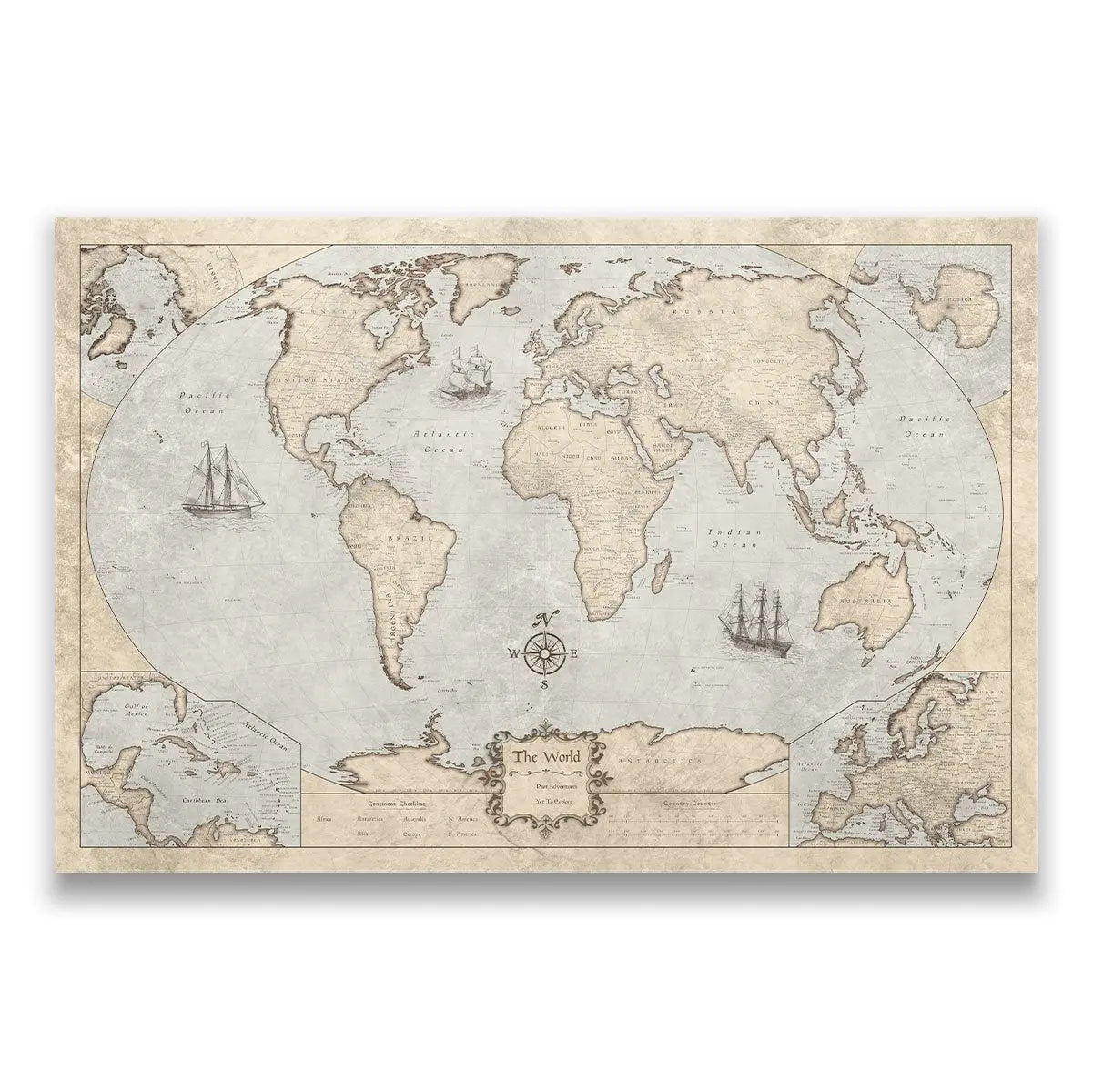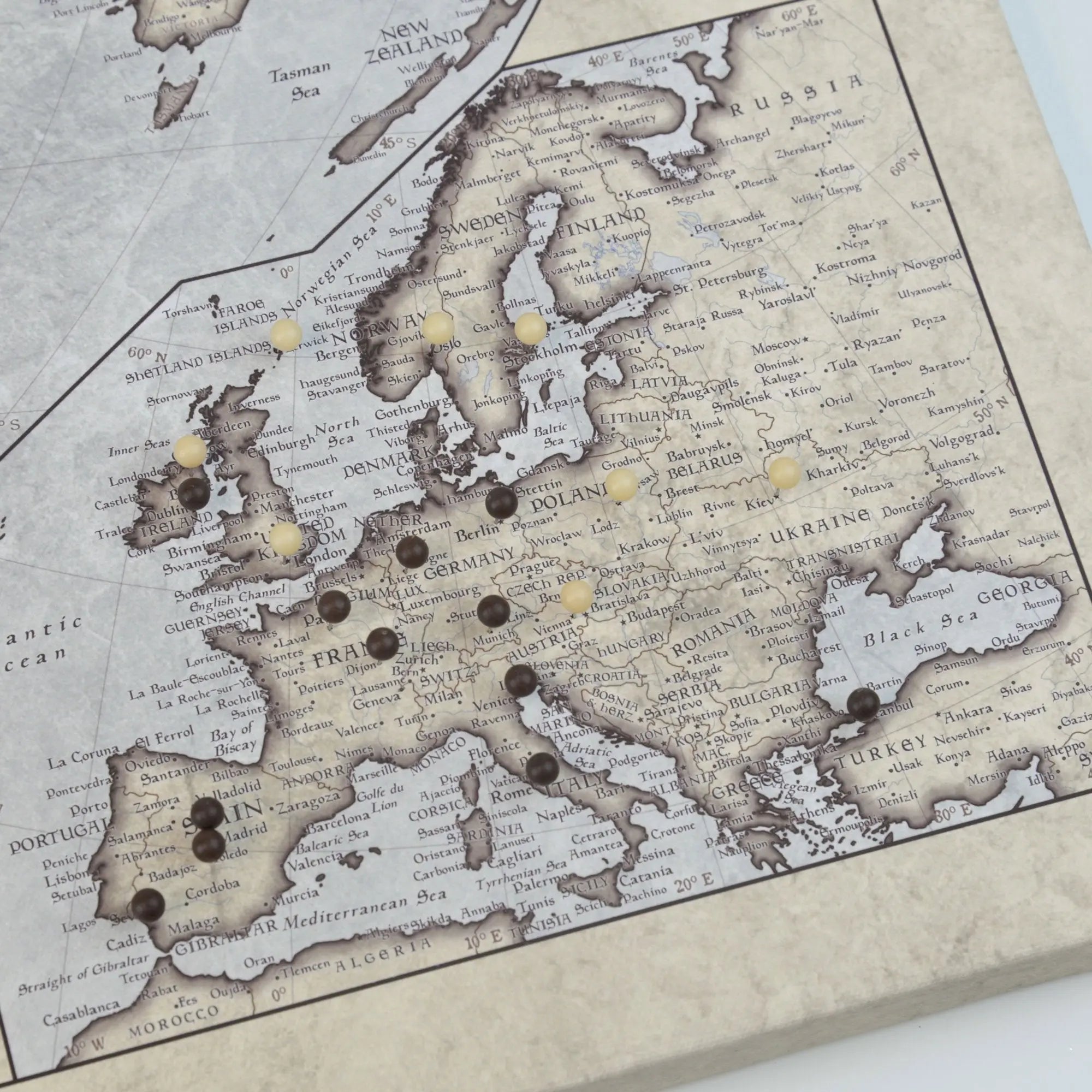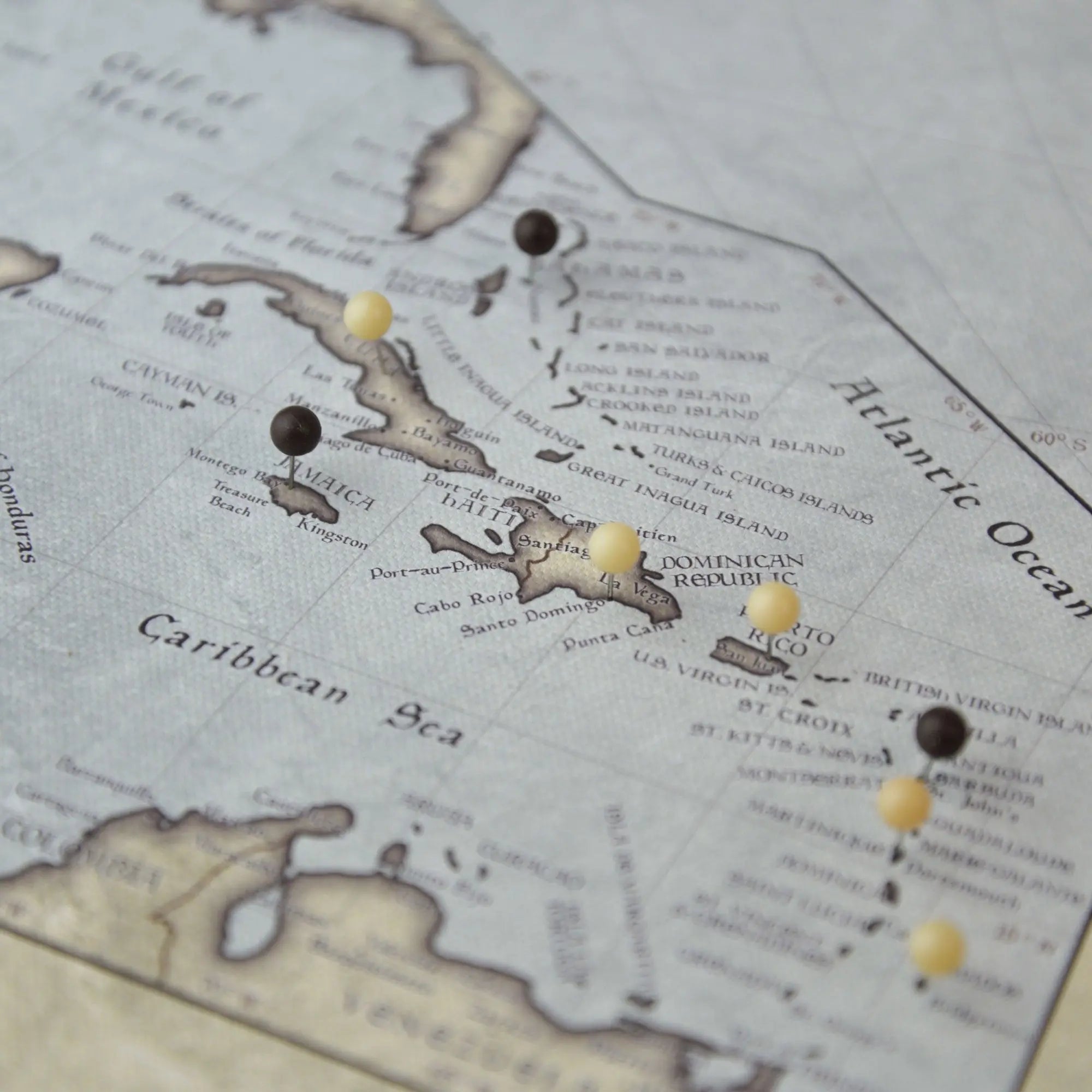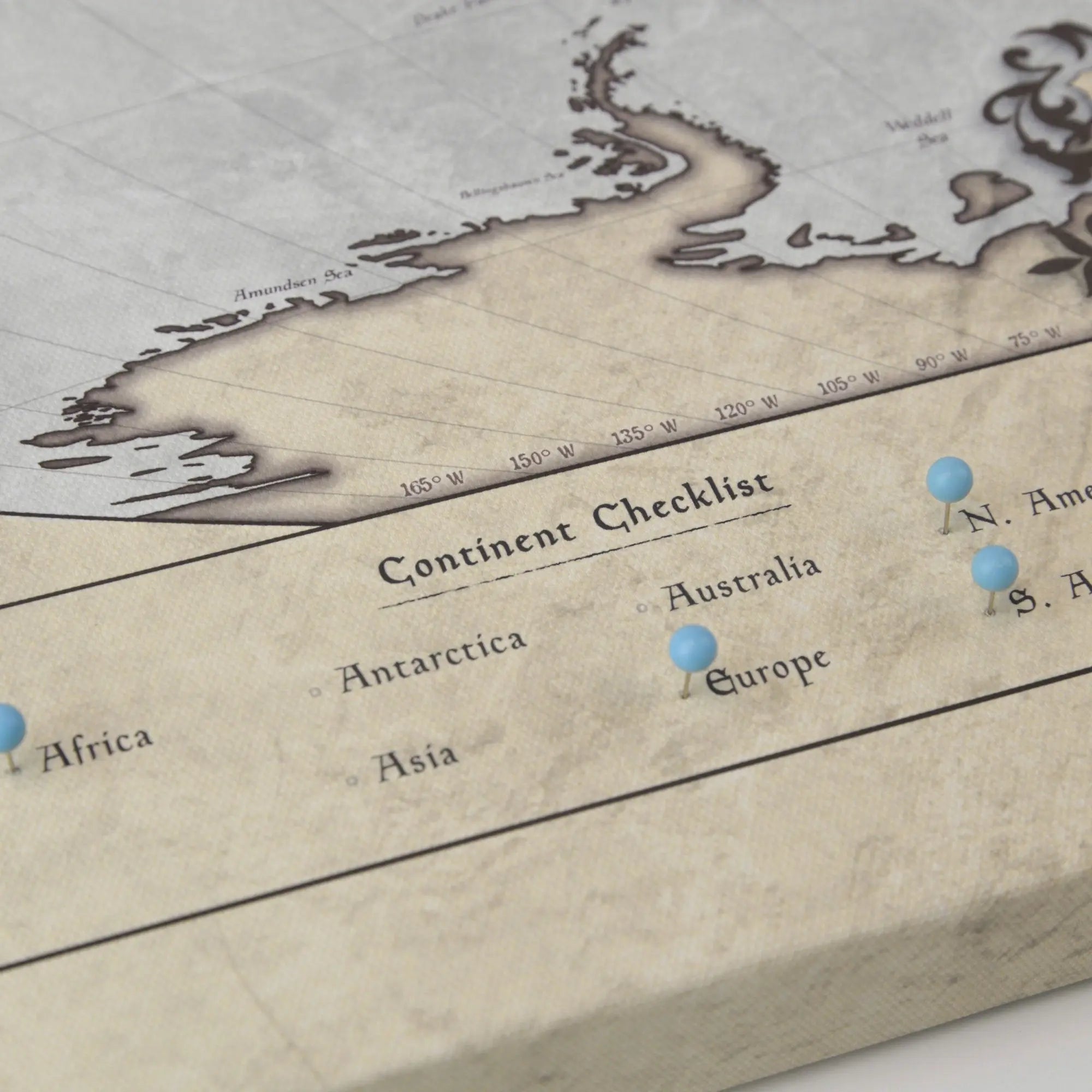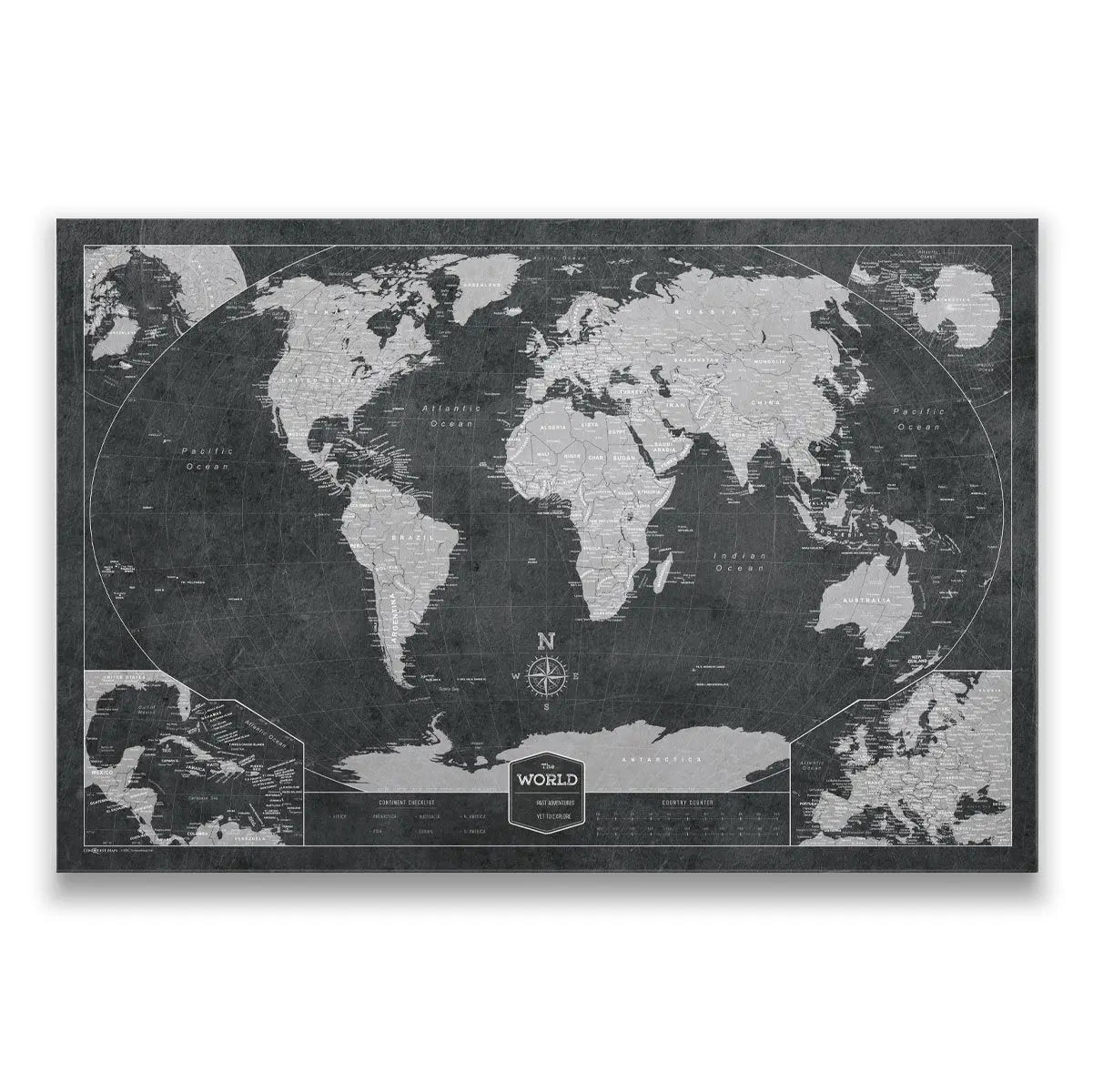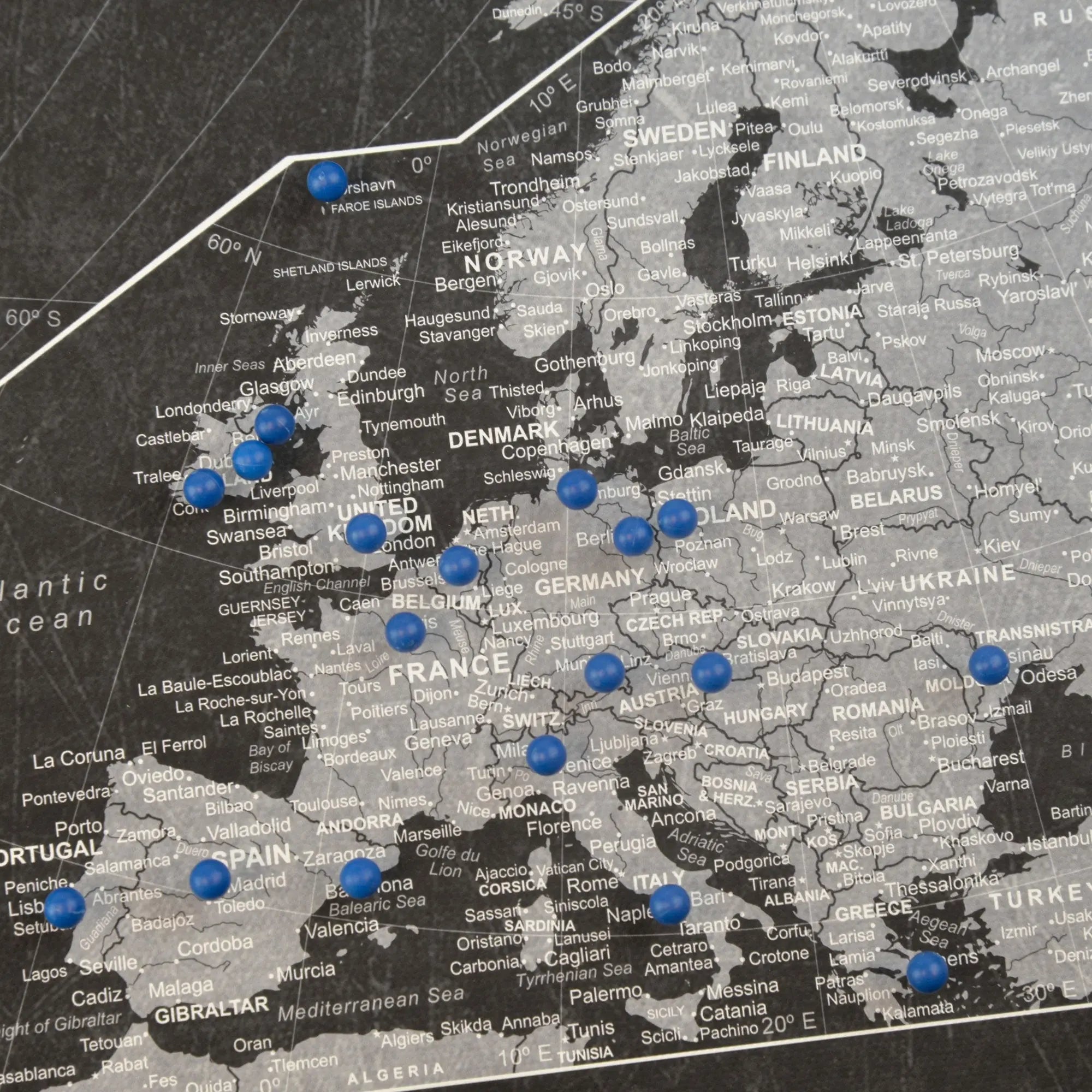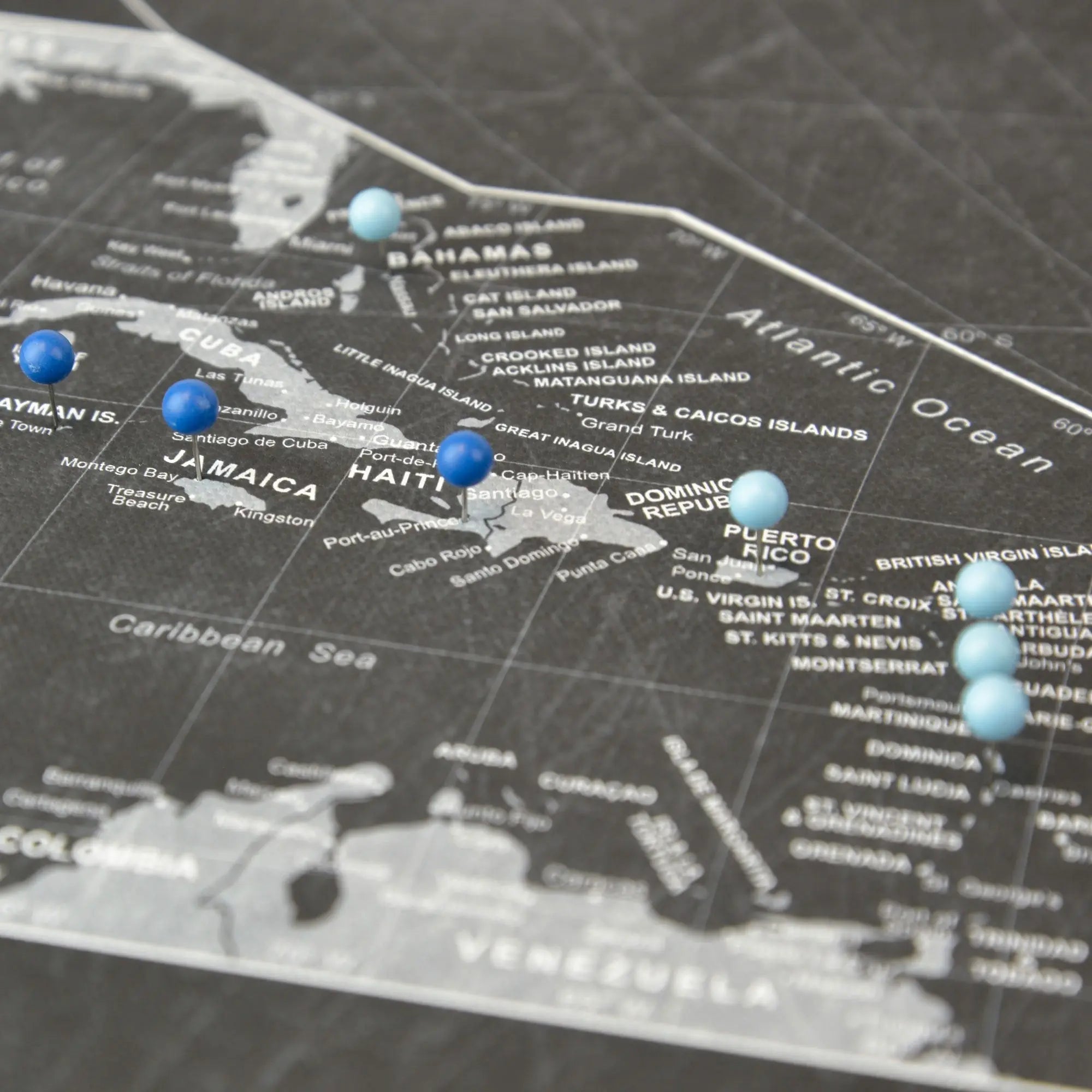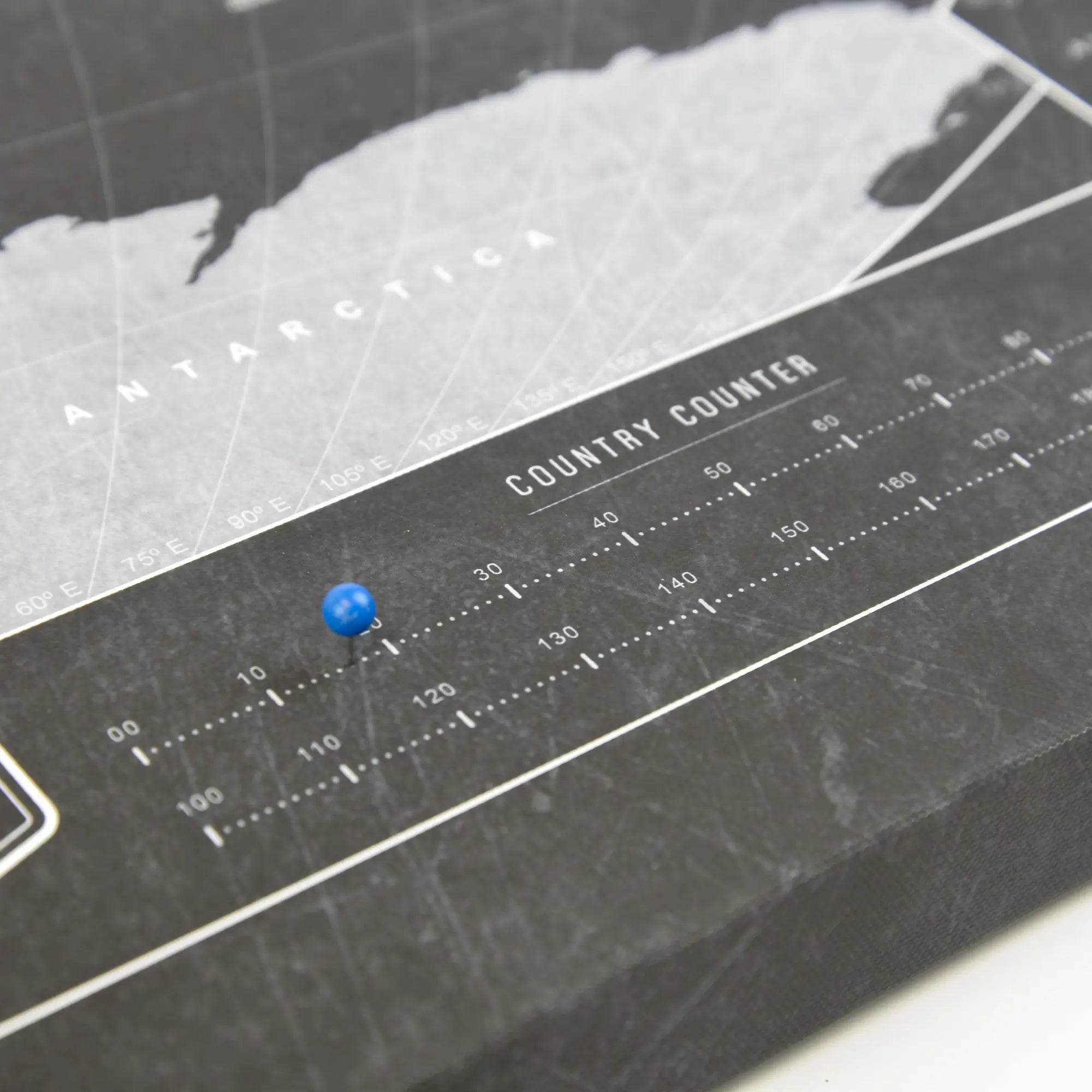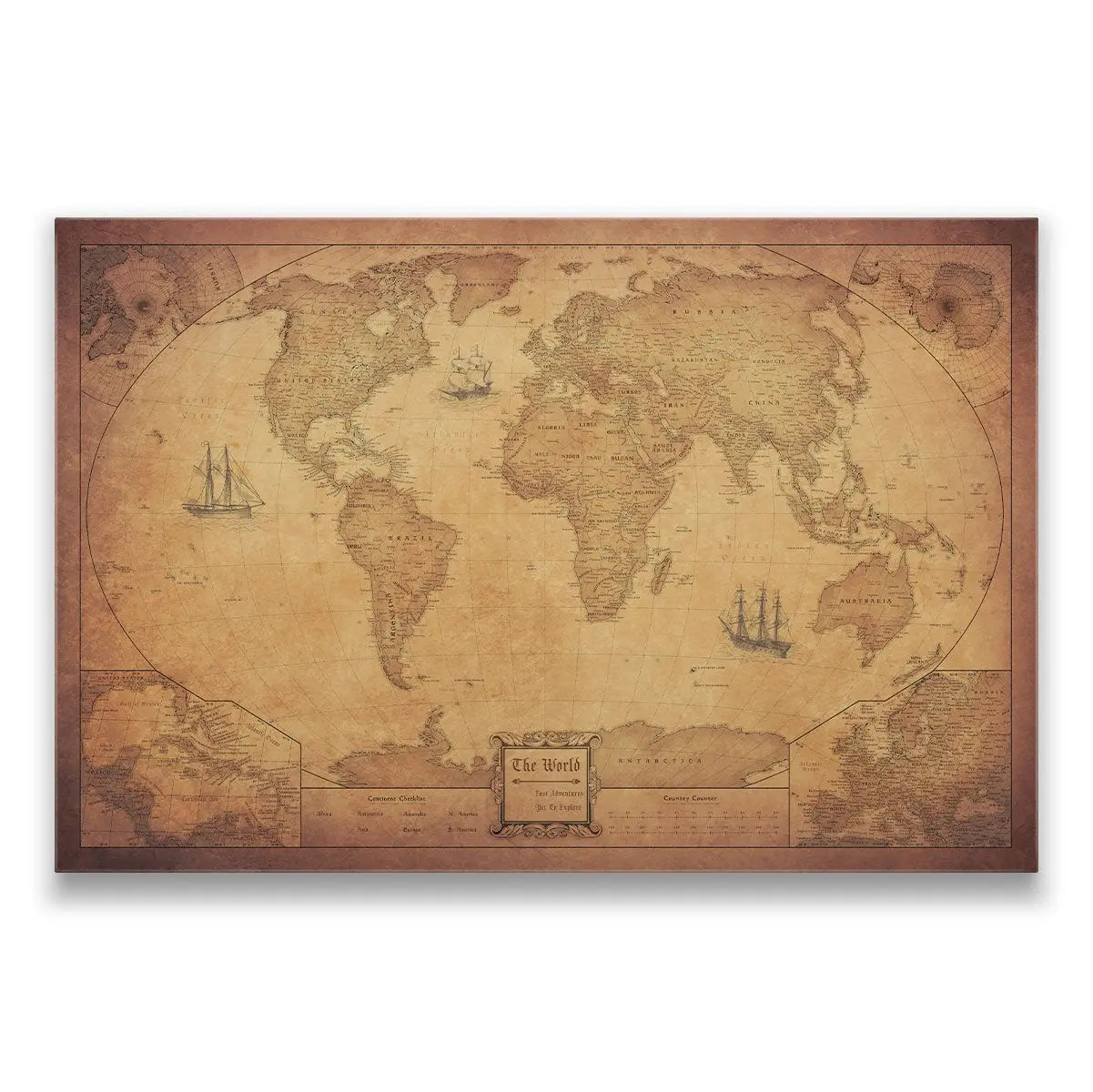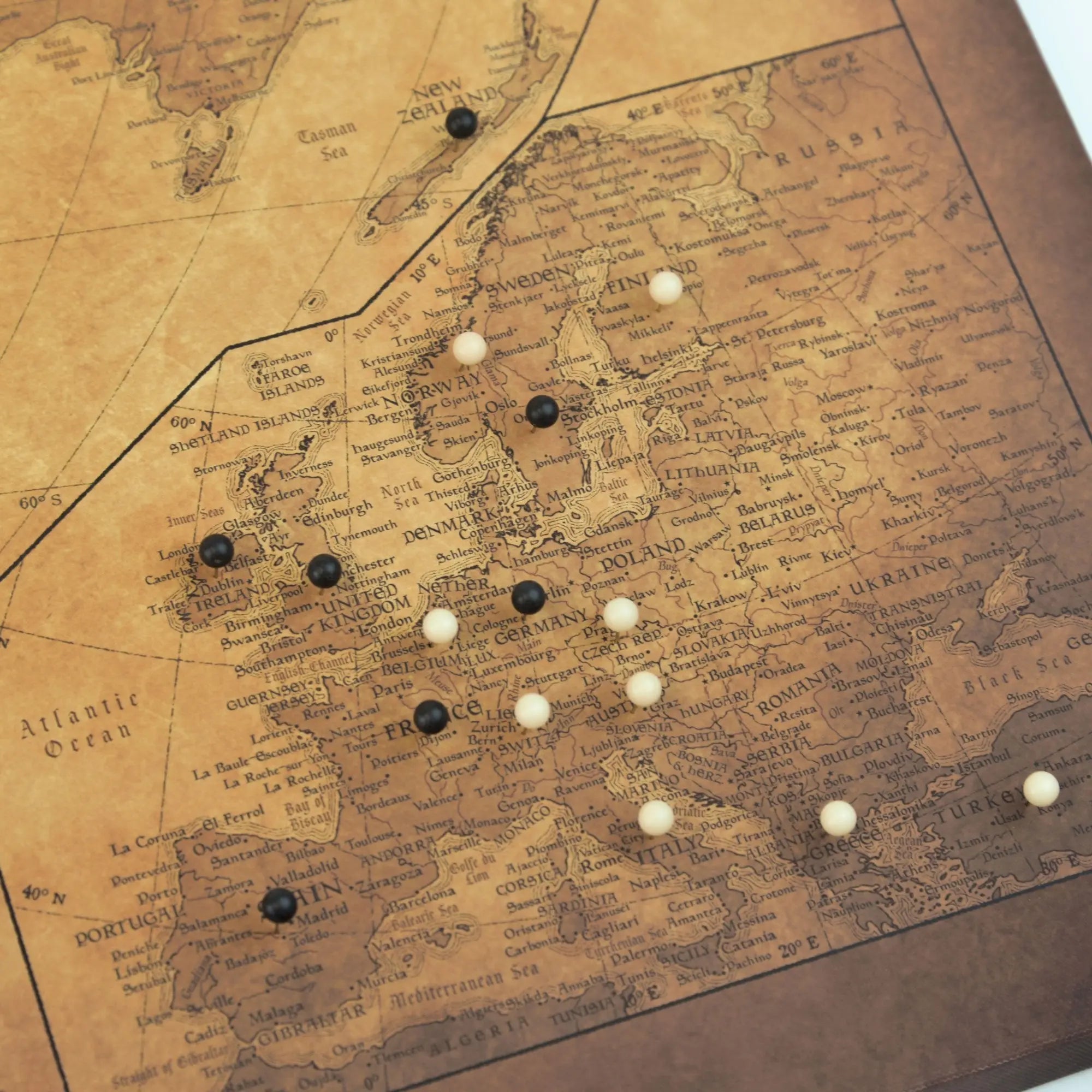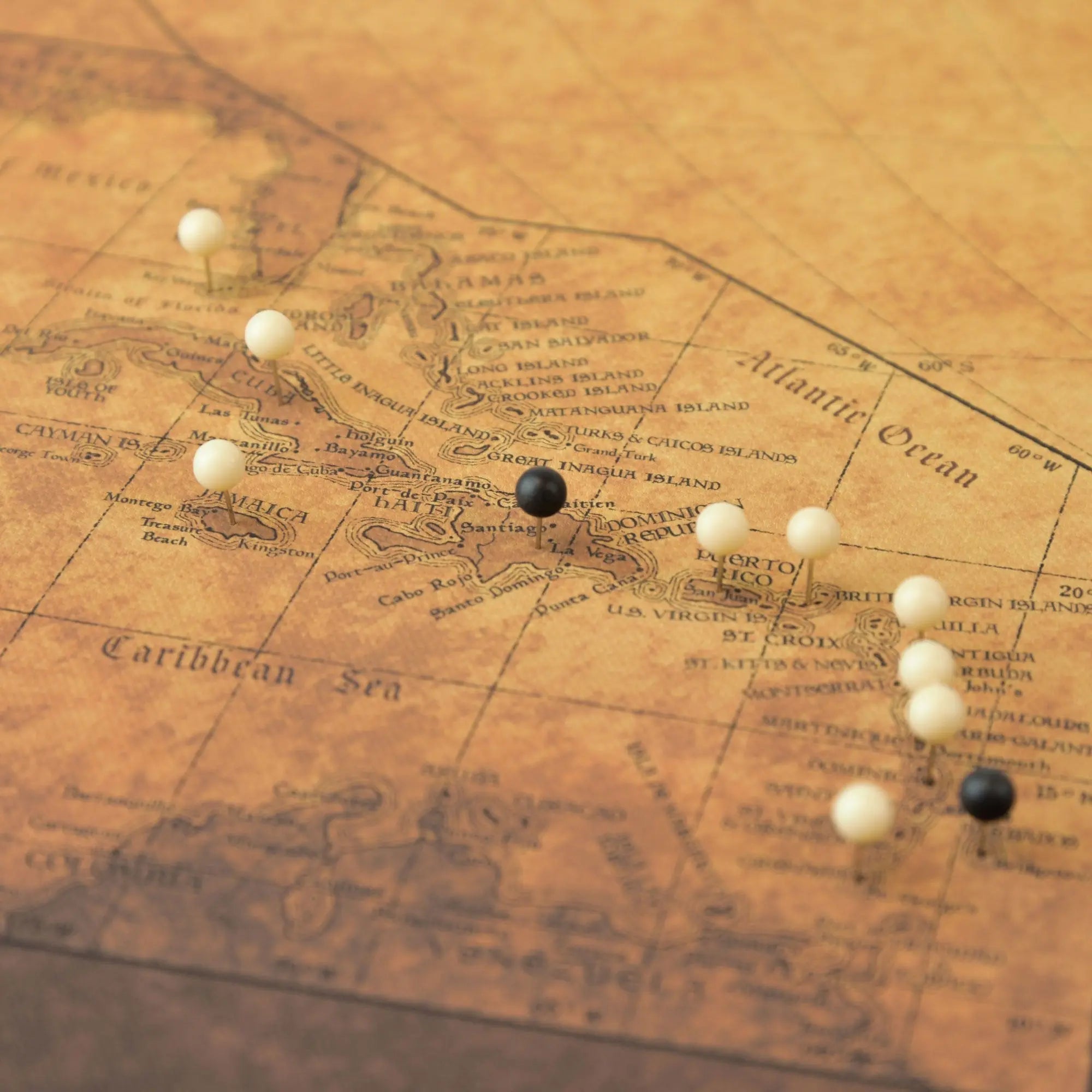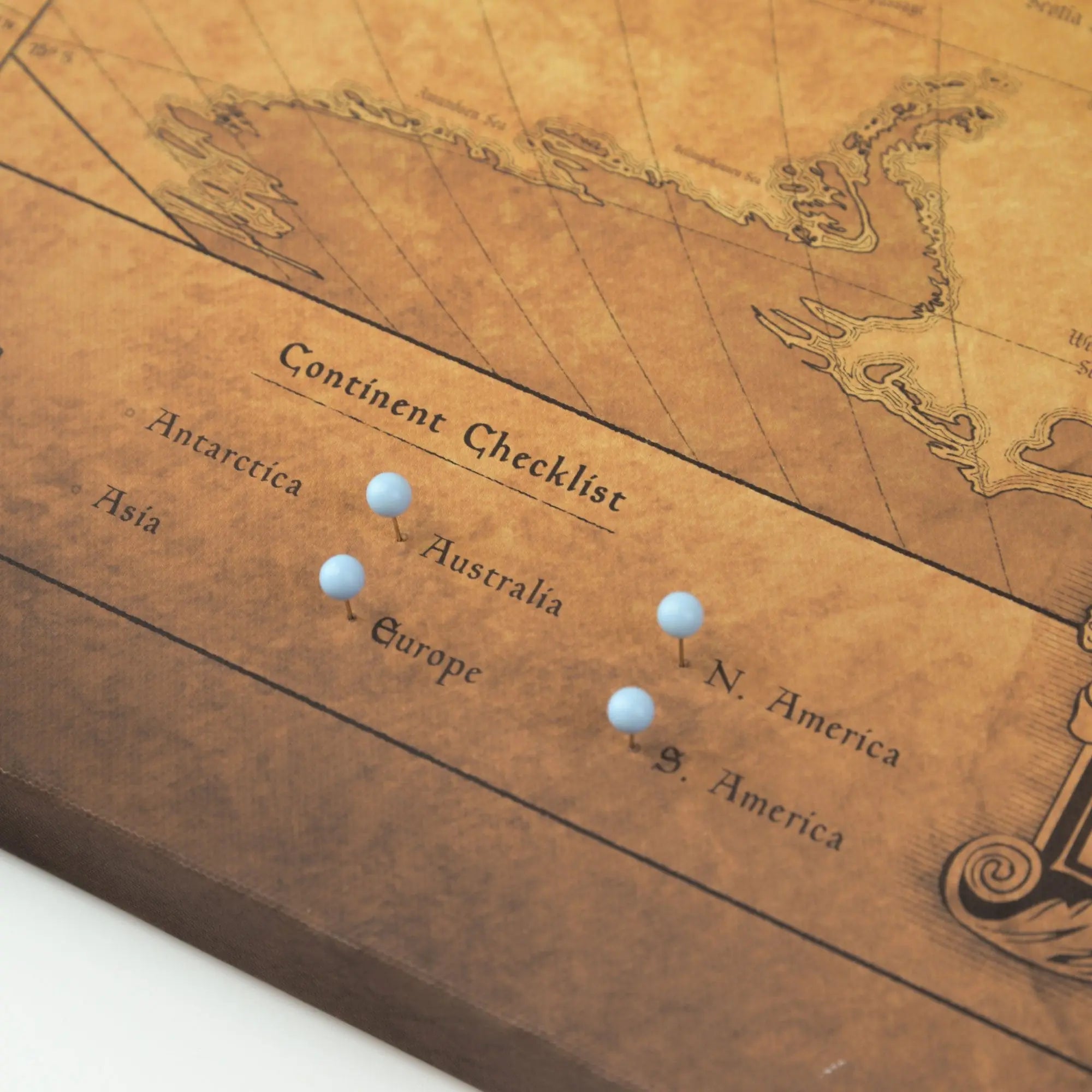The Winkel Tripel World Map
3 products
Sort by:
Best selling
Sort by
The Winkel Tripel Projection is one of the most popular world map projections used today. It’s been the projection of choice for noted organizations like the National Geographic Society because of its accurate sizing of continents across the globe. Plus, in addition to the zoomed-in corner insets of Europe and the Caribbean, there are useful country and continent counters at the bottom!


